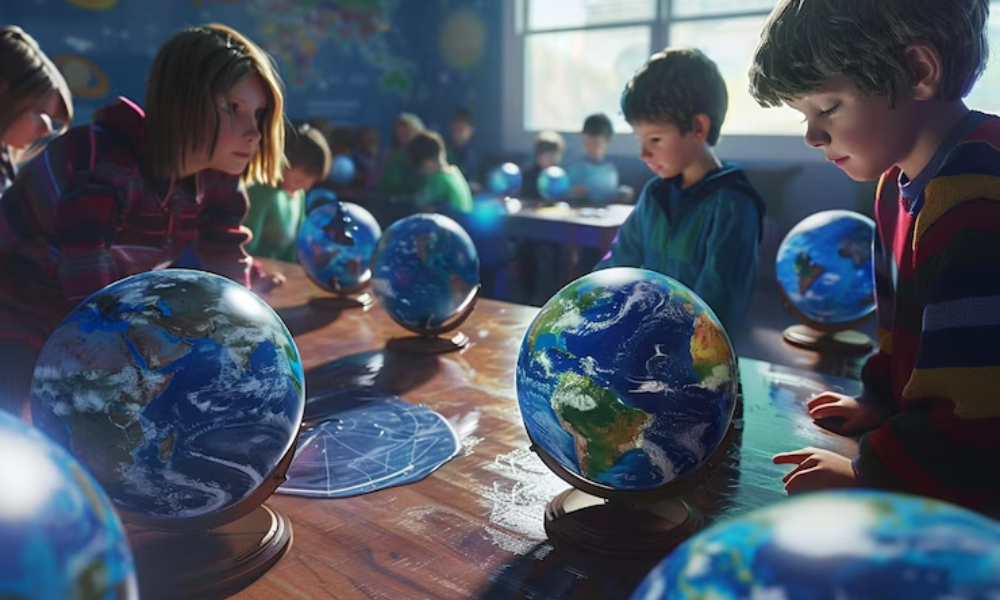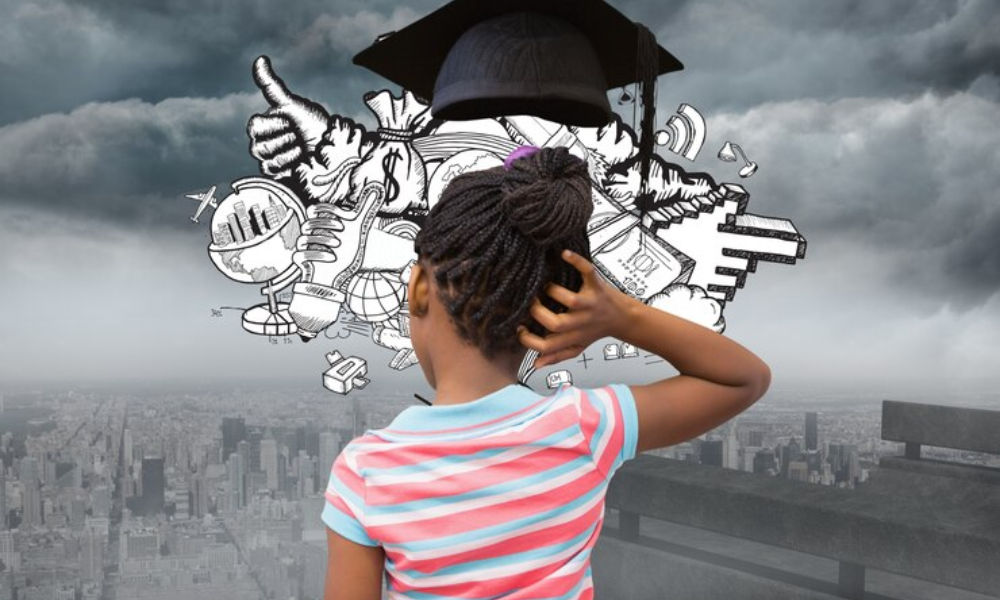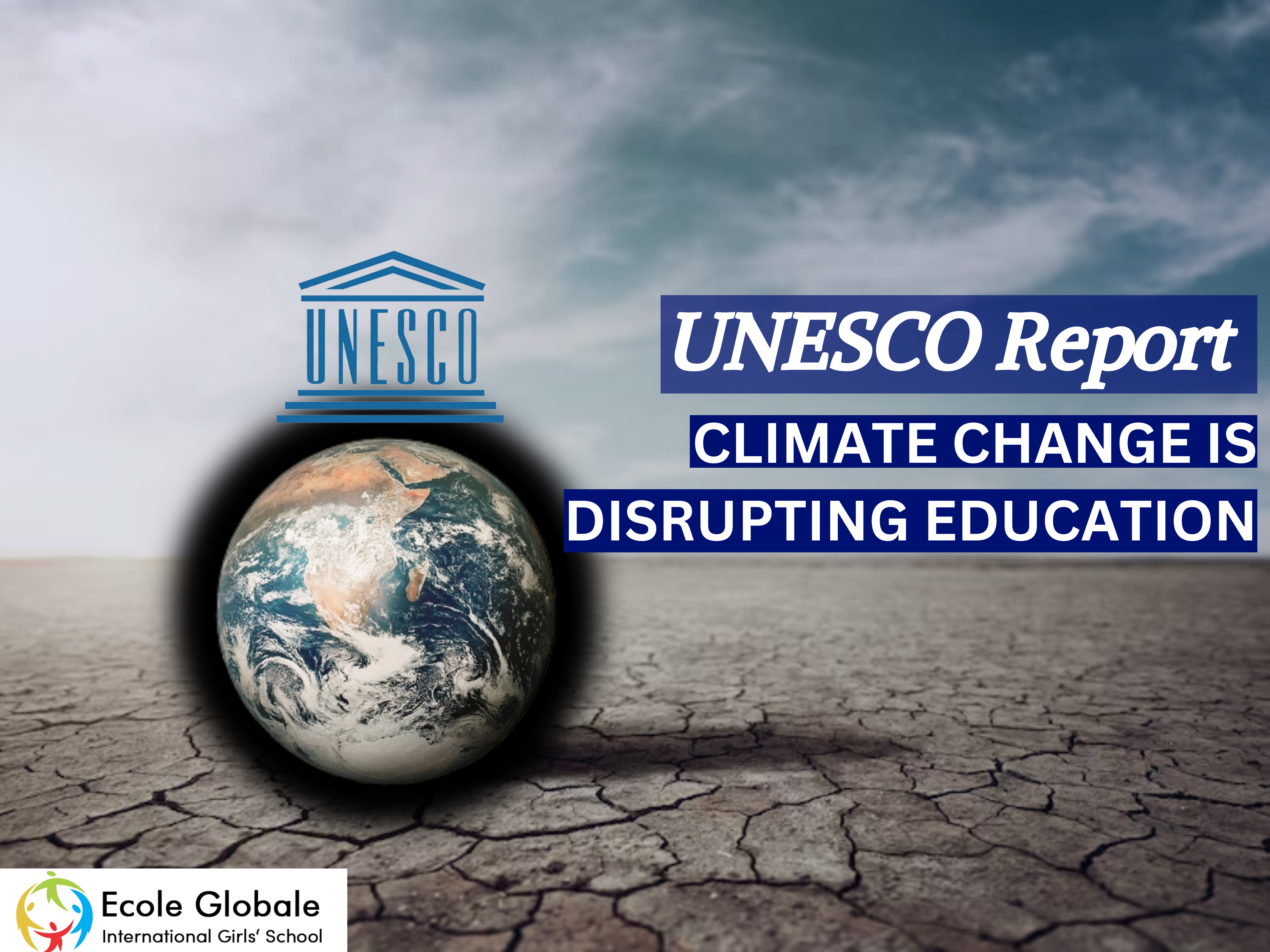Climate change is having a profound impact on education, particularly in low and middle-income countries. According to recent reports by UNESCO report, the MECCE project, and the University of Saskatchewan, climate-related stressors like heat, wildfires, floods, and rising sea levels are threatening to undo the educational progress made over recent decades. This article aims to shed light on how climate change is disrupting education and what this means for students, parents, and educators.
UNESCO Report Direct Impact of Climate Change on Education

UNESCO Report Climate change is already disrupting education systems worldwide. Here are some key points from the report:
- Destruction of Infrastructure: Extreme weather events such as floods and cyclones have led to the destruction of school buildings, leaving many students without a place to learn.
- Loss of Life and Injuries: Natural disasters have caused the deaths of students and teachers and resulted in injuries that further hinder educational continuity.
- Displacement: Climate-induced displacement has forced many families to relocate, often to areas without adequate educational facilities.
Indirect Effects on Education

Beyond the direct impact, UNESCO Report climate change also affects education through various indirect channels:
- Health and Livelihoods: Poor health and economic instability caused by climate change can reduce a family’s ability to prioritize education.
- Reduced School Enrolment: Displacement and economic hardship lead to lower school enrolment rates, especially in regions frequently affected by natural disasters.
Heat Exposure and Educational Outcomes

Exposure to high temperatures has significant negative effects on educational outcomes:
- Reduced Years of Schooling: Children exposed to higher than average temperatures during early life stages tend to have fewer years of schooling. For instance, in Southeast Asia, higher prenatal and early life temperatures correlate with less time spent in school.
- Lower Test Scores: In the United States, an increase in temperature by just one degree Celsius during the school year, without proper air conditioning, reduced test scores by 1%. Similarly, high temperatures in China and Brazil have been linked to poorer academic performance.
The Impact on Different Regions

UNESCO Report Climate change affects various regions differently, with low and middle-income countries bearing the brunt:
- India: Rainfall shocks in India have negatively impacted vocabulary skills at age five and math and non-cognitive skills at age 15. The effects are more severe for boys and children from less educated families.
- Brazil: In heat-prone areas, students lose about 1% of learning each year due to rising temperatures.
Vulnerability of Marginalized Populations

Marginalized populations are the most affected by climate-induced educational disruptions:
- Lower Income Countries: Eight out of the ten countries most affected by extreme weather events in 2019 were low or lower-middle-income countries.
- Fragile States: Of the 33 countries identified as bearing extremely high climate risks for children, 29 are considered fragile states.
Strategies for Mitigating the Impact

Addressing the educational disruptions caused by climate change requires a multi-faceted approach:
- Improving Infrastructure: Schools need to be built or renovated to withstand extreme weather conditions.
- Teacher Training: Educators should be trained to handle the challenges posed by climate change, including the psychological impact on students.
- Community Engagement: Raising awareness and involving the community in climate adaptation strategies can help mitigate the impact on education.
Conclusion
The UNESCO report highlights the profound challenges that climate change presents to global education systems, especially in regions already vulnerable to environmental impacts. Rising temperatures, extreme weather events like floods and cyclones, and the displacement of communities are increasingly disrupting schools and educational infrastructure worldwide. To mitigate these effects, proactive measures are essential. This includes fortifying school buildings against climate impacts, training educators to support students psychologically and academically amidst these challenges, and fostering community resilience through awareness and adaptation initiatives. It is crucial for parents, educators, and policymakers to collaborate closely to ensure that all children, regardless of environmental circumstances, have continued access to a quality education that prepares them for the future.









